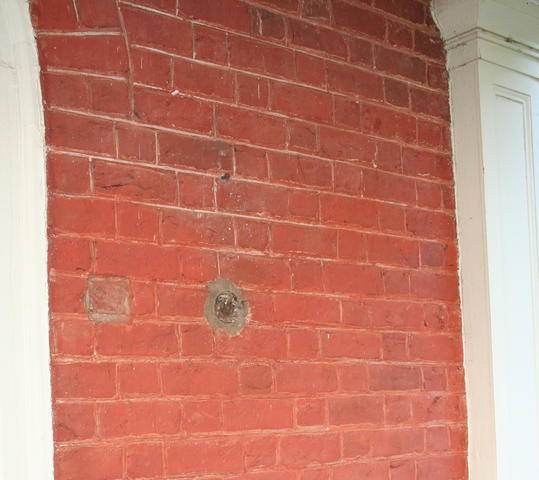
A brick building painted red assumes a solid, monolithic appearance that disguises any rough or irregular mortar joints, which were a major problem before machine-made bricks were available. By the late 18th century white lines had begun to be painted onto the mortar joints of red washed buildings. These lines made the building appear from a distance to have very narrow brick joints and replicated the look of a building built from more uniform, and higher priced, bricks. Often multiple coats of red washes are found on brick buildings due to the fact that red wash remained popular until the beginning of the 20th century. Red washing appears to have fallen out of favor due to the rise of the Arts and Crafts Movement, which found authenticity in unfinished and exposed building materials. However, the growing popularity of the Colonial Revival style in the late 19th and early 20th century may have also contributed to its abandonment due to a mistaken belief that red washes were only used in the mid 19th century.

©Gardiner Hallock
|
|
Two generations of red wash seen on a ca. 1811 house in Albemarle County, Virginia. Penciling, or white lines painted onto the mortar joints, can be seen at the top of the photo. |










